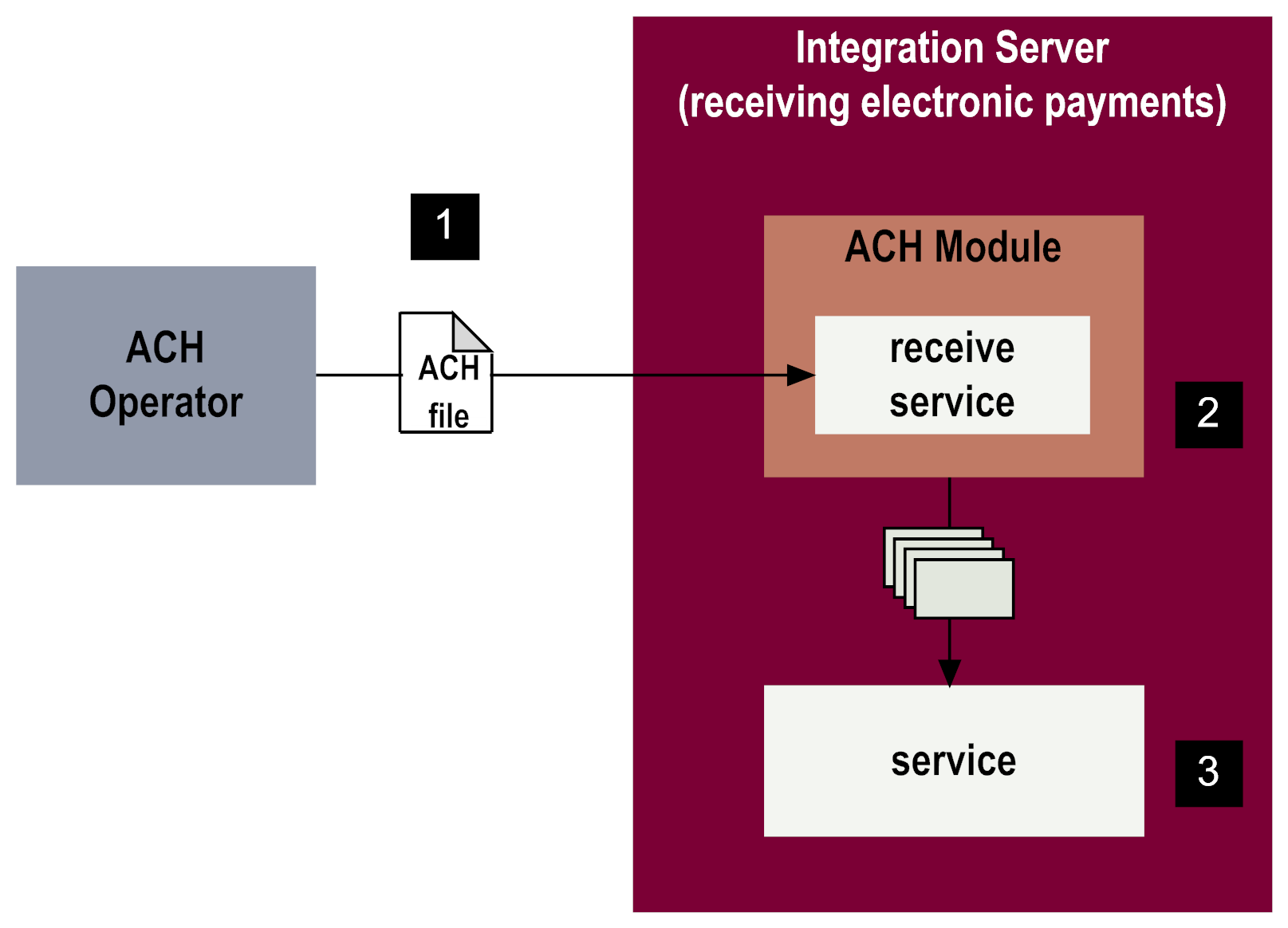

Step | Description |
1 | The ACH Operator sends an ACH file. |
2 | The RDFI receives the ACH file and sends the ACH file to Integration Server by invoking either the
wm.ach.trp:receive or
wm.ach.tn.trp:receive service, which are provided with ACH Module to process incoming ACH files. The
wm.ach.trp:receive does not save the incoming ACH file to the ACH Module persistence store. However, if you use
wm.ach.tn.trp:receive to send the ACH file to Trading Networks, you can save the incoming ACH file to the Trading Networks database. |
Thereceive service validates the incoming ACH file. It parses the individual batches from within the ACH file and sends each batch for processing. For more information about processing ACH files with Trading Networks, see
Receiving ACH Files with
Trading Networks . For more information about Trading Networks, see the webMethods Trading Networks User’s Guide for your release. For more information about setting up routing rules using ACH Module, see
Configuring Routing Rules. For more information about processing ACH files without Trading Networks, see
Receiving ACH Files without
Trading Networks . | |
3 | The service you create extracts individual entries from within a batch and processes the transactions represented by the entry. ACH Module provides the
wm.ach.batch:getNextEntry service you can use to extract entries from a batch. |